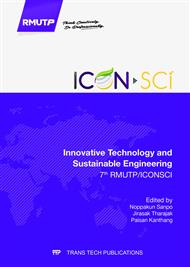p.17
p.21
p.25
p.29
p.33
p.37
p.41
p.45
p.48
The Influence of Color Shading Net on the Growing of Lettuce
Abstract:
Nowadays, shading net is widely use in Thailand, especially for vegetable production. Many colors of shading net can be found in the market. In this experiment, we set up three net houses for lettuce by using three colors of 50% transparent shading net, black, red and green. Ten of 15 days after planting (DAP) lettuces were moved to each color net house and control (direct sun). Total 40 lettuces were used for 10 days experiment. The result showed that the leave length and width of lettuce under red shading net respectively were significantly bigger than those under green shading net and control treatment without significant difference with the black shading net. The lettuce under red shading net had a highest stem diameter, fresh weight and dry weight comparing with others color shading net. The spectra of the solar radiations that transmitted through the red shading net were suitable for the photosynthesis of the lettuce leaves that could promote lettuce growth and yield.
Info:
Periodical:
Pages:
33-36
Citation:
Online since:
June 2017
Authors:
Keywords:
Price:
Сopyright:
© 2017 Trans Tech Publications Ltd. All Rights Reserved
Share:
Citation:


